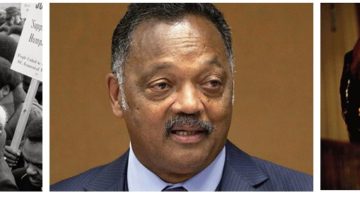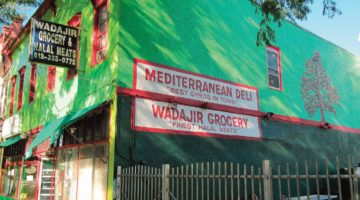 ATLANTA (AP) _ In a recent campaign email, Democratic Rep. John Barrow warned his supporters of the looming threat he faces in his quest for re-election next fall.
ATLANTA (AP) _ In a recent campaign email, Democratic Rep. John Barrow warned his supporters of the looming threat he faces in his quest for re-election next fall.
“The folks in Atlanta are in the final stretch of redrawing our congressional district, and they've made their master plans very clear from the start: maximize their power at the expense of your constitutionally-given voice,'' the message reads before soliciting donations for his campaign.
If Barrow is nervous, he has reason to be: The district he represents has changed considerably in the past decade, and its boundaries will likely look different after the upcoming battle over redistricting.
Lawmakers are set to head back to the Georgia Capitol on Aug. 15 for redistricting, the state-by-state process of redefining the geographic political boundaries for offices including legislative and congressional districts and county election precincts. Redistricting is done every decade in conjunction with the U.S. Census, and those drawing the maps must take into consideration such criteria as keeping together communities with similar interests and ensuring that districts have a roughly equal number of constituents.
As in many states, redistricting is controlled by the Georgia Legislature and is a partisan process. For the first time in the history of redistricting the entire state of Georgia, Republicans are in charge of deciding how the lines will be drawn and are expected to take advantage of their new-found power.
What the census showed is that Georgia's population grew 18.3 percent from 2000 to 2010, to more than 9.6 million residents. Georgia's growth has gained the state an additional congressional seat, which is likely to be drawn in north Georgia.
University of Georgia demographer Doug Bachtel points out that the Atlanta metropolitan area is among the fastest-growing areas in the country. He attributes the boom in north Georgia to the diversified economy not dependent upon agriculture; Hartsfield-Jackson Atlanta International Airport, the nation's busiest; the major military installations in the area; the region's scenic beauty, also a draw for tourism; its numerous collegiate and professional sports teams; and its proximity to other major metropolitan areas.
“This is where the growth is,'' Bachtel said. “That will, in all probability, continue, thus the logic for a new district being drawn here.''
The center of political power also shifted to north Georgia this year with the state's top three leaders all hailing from the region. Gov. Nathan Deal and Lt. Gov. Casey Cagle are both natives of Hall County, and House Speaker David Ralston is from Blue Ridge, near the Tennessee line.
The state's coast has also thrived, with tourism jobs bringing people to the area. Chatham County _ home to Savannah and the heart of Barrow's territory _ is now the state's fifth most-populated county, adding more than 33,000 residents from 2000 to 2010. Barrow's district also includes Richmond County, which hasn't grown much but is still the ninth most-populated county.
Barrow's email, urging constituents to “take a stand before it's too late,'' could sound alarming, but the Georgia Democrat has come under fire in the past during the process.
Barrow was first elected in 2004, narrowly defeating his Republican challenger in a district that was drawn to favor a Democrat. In 2006, his district was redrawn again after Republicans won control of both houses of the state Legislature for the first time since Reconstruction _ forcing him to move from his native Athens to Savannah.
That year, Barrow eked out a victory by only 864 votes _ the slimmest margin of any Democratic incumbent nationwide. But after establishing himself with Savannah Democrats, he later sailed to re-election in 2008 and 2010.
If Barrow's district is redrawn and he loses all or parts of Savannah, Barrow could have real problems. But the GOP-controlled Legislature may decide against such a move, which could hurt Republican Rep. Jack Kingston by adding Democrats to his district.
University of Georgia political science professor Charles Bullock said adding Democrats to Kingston's district could mean he'll have to work harder to hold onto the seat.
“Kingston might not be willing to take one for the team,'' Bullock said.
In south Georgia, population has largely dipped as agriculture, the region's main economy, has struggled. None of the state's most-populated counties is in the area, and many counties claim less than 35,000 residents each.
“The overall problem in south Georgia is that it isn't growing as fast as the rest of the state,'' Bullock said. “There aren't a whole lot of extra people to move around.''
Much of that territory is in the 2nd Congressional District, home to Democratic Rep. Sanford Bishop, who narrowly won re-election in 2010 by a margin of about 4,800 votes.
It may be difficult for Republicans to make many changes to Bishop's district not only because of the falling population, but also because a neighboring district is newly Republican. Republican U.S. Rep. Austin Scott defeated longtime Democratic Rep. Jim Marshall last year.
“More than likely, they let (Bishop) hang on and shore up (Scott's) district for a conservative Republican … by pushing more black folks into Bishop's district,'' said Clark Atlanta University political science professor William Boone.
Although such a strategy would help Bishop, a Democrat whose district is currently dominated by white agricultural interests, Scott would also benefit from having fewer Democrats in his district.
The 8th Congressional District, which Scott represents, includes Macon and did not experience much population change overall. Last year, Scott defeated Marshall, who had held office since 2003, by a 53 percent to 47 percent margin _ a difference of 10,250 votes.
The strategy of helping the other party is not new, Bullock said, noting blacks and conservatives have partnered before for mutual gains.
“The 1980s and 1990s saw the Black (Legislative) Caucus working very closely with the Republican Party during redistricting,'' he said. “In essence, they had a common enemy. So what you saw happening was the creation of some new districts that would be heavily black, and some of the surrounding districts became much whiter and more likely to elect Republicans.''
Georgia currently has four black congressmen, and Bishop is the only one outside of metro Atlanta. His district is home to the second most-populous area for African-Americans outside the state capital. That may afford him additional protections under Section 5 of the Voting Rights Act, which states that minority voting power cannot be diluted, a practice known as retrogression.
Barrow, one of a few remaining white southern Democrats, could also use Section 5 to his advantage because the law says that minorities must be able to “choose the candidate of their choice.''
“He has gotten large black support,'' Bullock said. “If Barrow's district were to be substantially changed and made much whiter, he or a third party might try to make the argument that retrogression should also apply to him.''
Regardless of how the maps are drawn, several groups have indicated that legal challenges to the changes are likely.












No Comment